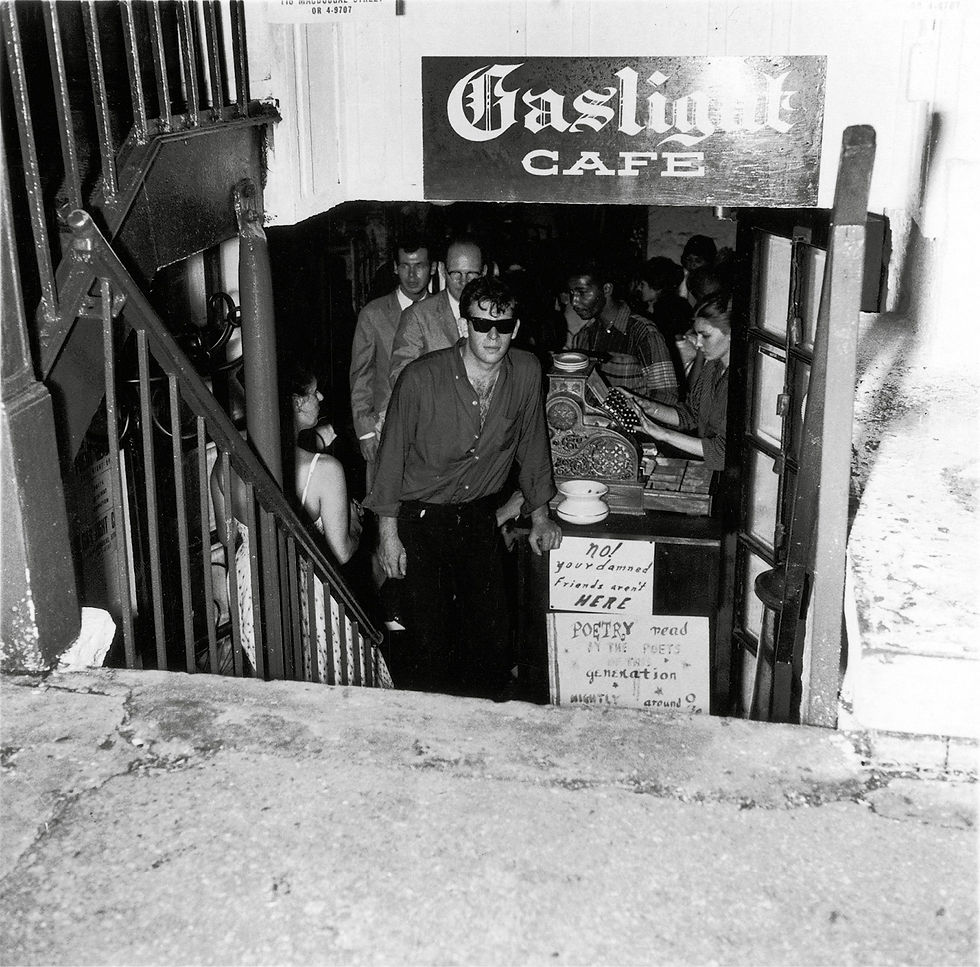the 1948
KEY TERMS
EXISTENTIALISM: a philosophical attitude associated especially with Heidegger, Jaspers, Marcel, and Sartre, andopposed to rationalism and empiricism, that stresses the individual's unique position as a self-determining agent responsible for the authenticity of his or her choices 3.
ANTIFASHION: Describes everything from countercultural and subcultural styles to the classic and traditional forms of dress 8..
COUNTERCULTURE: The culture and lifestyle of those people, especially among the young, who reject or oppose the dominant values and behavior of society 1.
BEAT GENERATION: The time period between 1947 and 1958 that shaped the Beatnik movement. These people wore regular clothes of the time and partook in poetry and music.
JACK KEROUAC: Author of books such as On the Road, Dharma bums, and The Subterraneans. Can be credited with creating the name "Beat Generation"10.
ALLEN GINSBERG: Poet from the 1940s. Famous for poems such as Howl 10.
DIZZY GILLESPIE: Jazz musician from the mid-late 1940s that can be credited as the inspiration for the blue beret and the horn-rim spectacles 10.
BEATNIK: Created in the later 1950s, these people were the ones that wore the black clothes, had sleek hair, and had an existentialist view of life. One influence of beauty can be singer Juliette Greco 2
CHICK: Female Beatnik, derivative of "jive talk" 10.
CAT: Male Beatnik, derivative of "jive talk" 10
HORN RIM: Having the frames or rims made of horn or tortoise shell, or plastic that simulates either of these 7.
EARLY DAYS
In 1948, author Jack Kerouac had a conversation with another man that described the generation he was living in as "Beat." This conversation gave way to the name "Beat." Starting in 1944, a handful of poets and writers formed a literary movement that consisted of:
-
Uncensored self-expression and creativity
-
Expanding the artist's consciousness through non-rational means (i.e. drugs)
-
Allowing art to dictate the means of conventional morality 10.
They admired Jazz music and had a philosophy of simply wanting to get away from the major capitalist world. The Beat movement could also be described as countercultural to counterculture because the traditional counterculture movement focused on rock-and-roll while the Beat movement focused on literature and drugs 6.. The Beats at this time could also be described as an earnest college kid who just wants to get away from the city life, go to foreign places, and "live like the people" 5.
Fashion in the beginning of the movement could best be described as "beat" with garments such as Army jackets, frayed sweaters, faded jeans and t-shirts 10.

Hal Chase, Jack Kerouac, Allen ginsberg and William S. Burroughs outside of Columbia University (ca. 1944). While all four men followed the same general ideology, they present in four different ways.

Hal Chase, Jack Kerouac, Allen ginsberg and William S. Burroughs outside of Columbia University (ca. 1944). While all four men followed the same general ideology, they present in four different ways.
PRE-COMMERCIALIZED ITEMS OF DRESS








-
T-Shirts (Underwear)
-
Faded Jeans
-
Chinos
-
Army Jacket
-
Levi's Jacket
-
Checked Shirt
The Rise to Popularity
With any tribe in subculture, there is a need for acceptance. The Beats were seen as a safe haven for people. A style that was described as, "casual" and "shabby" began to emerge 10. While the shabby aesthetic was very apparent in this time, it did not mean that everyone was following it. The Six Gallery Reading, occurring on 7 October 1955, showcased fashions ranging from jeans to a proper suit.
During this point in the movement, we begin to see sportswear designer Claire McCardell design everyday black clothes, as well as work with Capezio to begin the rise of the ballet flat 9. Designers in the mid 1950s began to pick up on the movement of black clothes. Dior stated that, "You can wear black at any time. You can wear black at any age. You may wear it on almost any occasion"4.
MEDIA PORTRAYAL












-
Ballet flats
-
Black Jeans
-
Dark Glasses
-
Beret
-
Sandals
-
Black Slacks
-
Black Turtleneck
-
Black Leggings
-
Tights
Mainstream Pickup (Late 1950s)
As with most trends and movements in fashion, the mainstream market picked up the Beat movement. A 1958 interview with Herbert Caen became the genesis of the name "Beatnik" which originated from "beat" and the Russian rocket Sputnik 8. Jack Kerouac released a book in 1957 called On The Road, and this book became a New York Times best-seller. Audrey Hepburn starred in the movie Funny Face as a girl who was not named to be a Beatnik character but had all of the mannerisms and dress of a Beatnik character 10.
The Beatnik movement eventually made its way into the Yves St. Laurent 'Beat' Collection in Fall/Winter 1960 Fashion Week 9. On the commercial level, the sweaters and turtlenecks were sold in the "Back to School" and college level 10.



